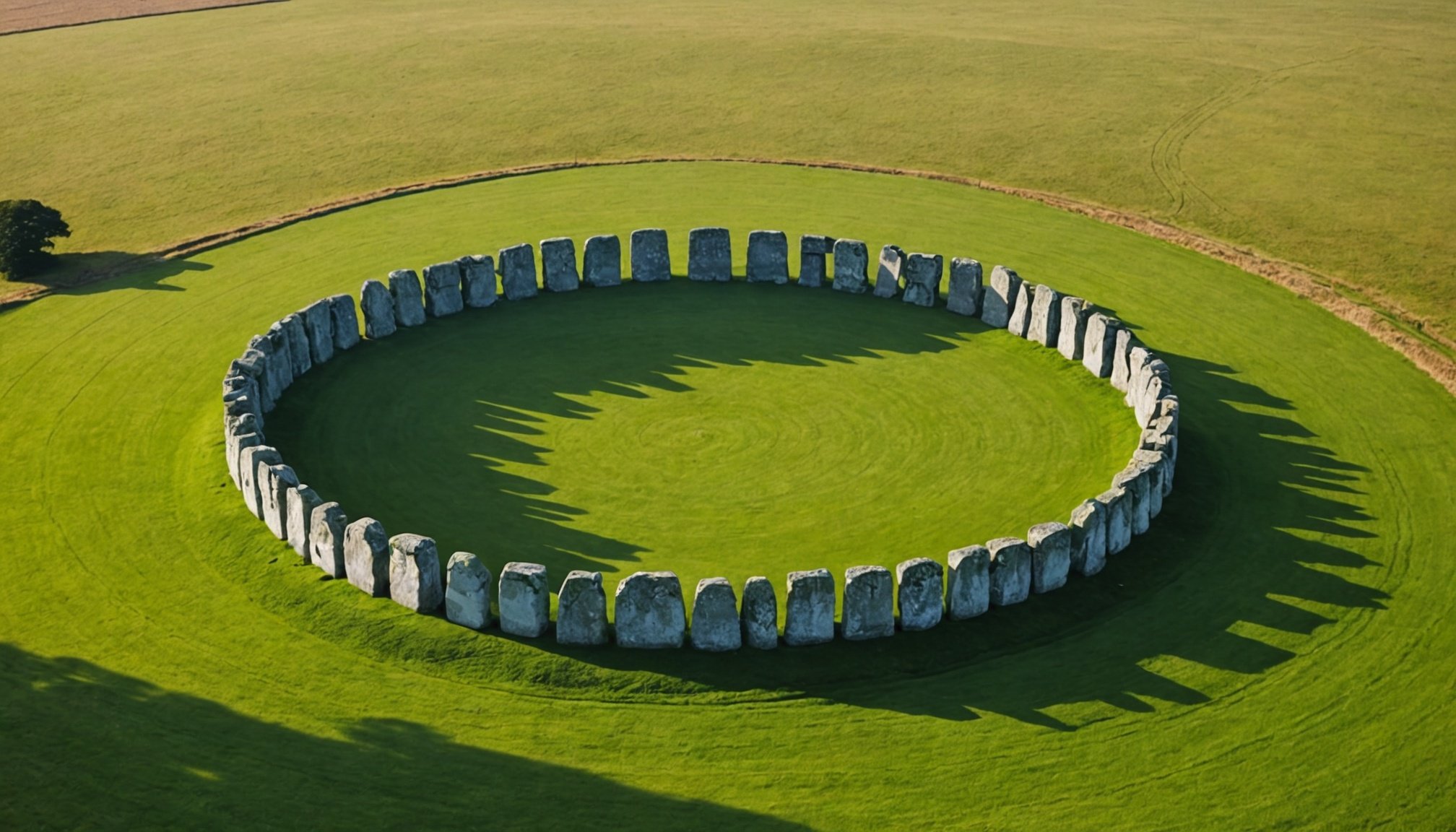Overview of Stone Circles in Britain
Stone circles are an essential part of Britain’s cultural heritage, echoing through history as enigmatic relics of prehistoric civilizations. These iconic structures were primarily built between 2500 BC and 2000 BC, serving diverse purposes—some yet fully understood. Their historical significance is vast, reflecting society’s need to engage with religious, ceremonial, and celestial phenomena. While everyone knows Stonehenge, Britain is home to numerous stone circles, each offering its unique narrative.
Prominent sites include Avebury, Dartmoor’s Scorhill, and the Ring of Brodgar in Orkney. Each circle, regardless of fame, contributes vitally to our understanding of ancient cultures. For instance, Avebury’s vast layout and subtlely impressive size offer a stark contrast to the intimacy and remoteness of Swinside Circle in Cumbria. These stone circles are inextricably tied to the land, showcasing skill and social organisation in their construction. Lesser-known circles reveal just as much about prehistoric society as their more famous counterparts.
This might interest you : Discover Pembrokeshire’s Breathtaking Sea Caves: Unforgettable Guided Kayak Experience Awaits!
Their sheer enigma and historical significance continue to captivate explorers and academics. By visiting these magnificent sites, individuals become part of the ongoing story of discovery and cultural appreciation.
Detailed Profiles of Key Stone Circles
Exploring Britain’s stone circles offers a journey through unique historical landscapes. Each circle serves as a distinct chapter in understanding ancient cultures and customs.
In parallel : Explore the best uk spots for breathtaking medieval architecture marvels
Avebury Stone Circle
Avebury Stone Circle stands out due to its expansive scale and archaeological complexity. This UNESCO World Heritage site, older than Stonehenge, showcases a massive circular arrangement of standing stones enclosed by a large henge and ditch. Its mystical atmosphere attracts both researchers and tourists alike, offering an exceptional insight into Neolithic engineering and ceremonial life. Visitors enjoy walking amongst the stones, gaining a tangible sense of ancient mystical practices.
Callanish Stones
The Callanish Stones, located on the Isle of Lewis in Scotland, captivate with their uniquely distinctive cruciform layout. Rich in local legends, these ancient stones, sometimes known as the “Stonehenge of the North,” were erected around 2900 BC. They offer breathtaking views due to their spectacular setting amidst rugged landscapes. The stones align with lunar cycles, serving as a testament to prehistoric celestial knowledge.
Ring of Brodgar
Renowned for its cultural significance, the Ring of Brodgar in Orkney continues to intrigue archaeologists and visitors. This Neolithic site, with its perfect circle and impressive diameter, commands views over surrounding lochs. Its enigmatic purpose, possibly relating to rituals, draws those interested in unraveling prehistoric mysteries. Access is straightforward, with paths allowing close engagement with the stones.
Memorable Tours Beyond Stonehenge
Exploring stone circles offers an unforgettable journey into Britain’s ancient past, extending well beyond the renowned Stonehenge. For those seeking immersion in Stone Circle Tours, there is an array of travel itineraries catering to various interests and budgets.
Tour Options include both self-guided and guided tours, each offering distinct experiences. Self-guided tours provide the freedom to explore at your own pace, fostering a personal connection with these ancient sites. Conversely, guided tours offer rich insights from knowledgeable experts, helping visitors appreciate the historical significance of each location.
For memorable day trips, itineraries can feature a mix of famous sites like the Ring of Brodgar, and lesser-known gems such as Cumbria’s Swinside Circle. These Travel Itineraries create a comprehensive adventure for first-time visitors to the stone circles.
Several reputable tour companies provide tailored experiences, with services ranging from transportation to local guides. Opting for such services ensures a seamless experience, allowing travelers more time to enjoy the Cultural Heritage of Britain’s stone circles. Embrace the chance to delve deeper into prehistoric mysteries and create lasting memories beyond the well-trodden path of Stonehenge.
Travel Tips for Visiting Stone Circles
Visiting the stone circles of Britain involves careful planning to ensure a comfortable and memorable experience. Knowing the best times to visit can enhance the adventure. Late spring and early autumn offer excellent weather, providing opportunities to explore without the busy summer tourist crowds.
It’s important to consider what to bring and wear. Given the open landscapes, dressing in layers is recommended to adapt to weather changes. Comfortable footwear is a must, as many sites require walking over uneven terrain. Bringing a water bottle, light snacks, and a map or GPS device further enhances the visit.
Exploring nearby attractions can broaden the experience. Many stone circles are situated in regions rich with local culture. Delving into nearby towns or villages presents a chance to enjoy cultural heritage through local cuisine, museums, or festivals. For instance, near Avebury, visitors can explore the village’s historic architecture, offering a glimpse into England’s past.
Engaging with both the historical significance of the circles and their surrounding locales provides a well-rounded appreciation of this ancient phenomenon. Such trips can be both enlightening and enriching, connecting visitors to the profound layers of Britain’s ancient and modern landscape.
Cultural Significance and Folklore
The stone circles of Britain are shrouded in rich folklore, enhancing their allure and cultural insights. These ancient structures carry legends, often intertwined with local myths that have evolved over centuries. For instance, the Callanish Stones are said to be petrified giants who refused to convert to Christianity, lending a mystical aura to their existence. Such legends add a layer of enchantment for visitors, allowing them to connect deeply with these ancient traditions.
Recent archaeological findings continue to uncover insights into the cultural practices linked to stone circles. Discoveries of tools and artifacts suggest ceremonial gatherings and indicate a sophisticated societal structure. These insights reveal the profound cultural significance of stone circles, as they played a vital role in prehistoric communities for religious and social purposes.
Moreover, in modern spirituality, these ancient sites hold spiritual significance. Many visitors engage in rituals and meditations, seeking connections with the past. The enduring cultural insights that stone circles offer are both fascinating and perplexing, influencing modern-day beliefs and practices. Enthralled by their mystery, visitors often cite personal transformations and spiritual awakenings as part of their experiences at these mystical sites.
Personal Experiences and Anecdotes
Exploring Britain’s stone circles often leads to remarkable personal stories that capture the imagination. Visitors frequently share compelling accounts illustrating the profound impact these ancient sites have on them.
One visitor recounted a stunning moment at the Callanish Stones during a rare lunar alignment. Experiencing the alignment at dawn, they felt connected to the ancient traditions that once relied on such celestial events. This illustrates how these sites still cultivate a deep sense of wonder today.
Many narrate their encounters with local folklore, enhancing their visit. A couple touring the Ring of Brodgar relayed the legend of the “dancing stones,” where the stones are said to move at night. These tales enrich the experience, invoking a childlike fascination.
Engagement with modern spirituality is also notable. Participants of organized spiritual retreats at Avebury describe personal transformations while meditating amidst the stones. Whether seeking historical knowledge or spiritual clarity, such experiences provide visitors with lasting memories.
Reflections from these visits highlight stone circles’ ability to transcend time, offering an opportunity to connect physically and spiritually with the past, leaving a profound impression on those who walk among them.











